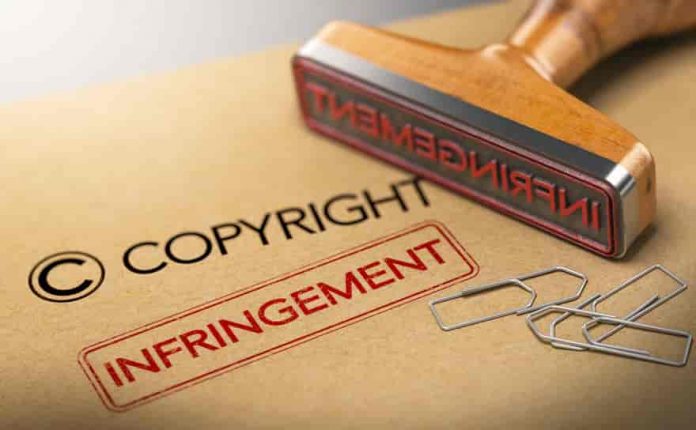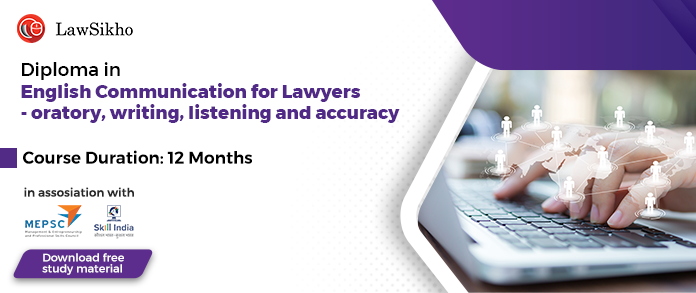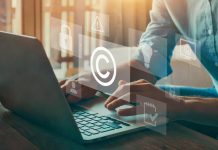This article is written by Yashaswi Srivastava and pursuing a Diploma in US Intellectual Property Law and Paralegal Studies. This article has been edited by Prashant Baviskar (Associate, Lawsikho).
This article has been published by Sneha Mahawar.
Table of Contents
Introduction
Copyright is the legal heart and soul of any creative person. Influencers, content creators, YouTubers, innovators, IT professionals, entrepreneurs, artists, designers, writers, filmmakers, producers, music composers, singers- you name it, you have it- all of them need to understand the rights conferred upon them by Copyright Law. This article talks all about it in detail. It also discusses what is an infringement and the enforcement norms.
What is copyright
Intellectual Property is simply defined as the creations of your mind. This discipline is broadly categorized into two forms-
Industrial property
IPs that relate to industrial use and know-how fall under industrial property- e.g., trademarks, service marks, patents, trade secrets, geographical indications, designs, etc.
Copyright
IPs that relate to specifically creative forms of the brain which have no industrial use are categorized under the copyrights. Various countries in their domestic legislation have tried to define copyright but we will look at the definition stated under the Berne Convention, 1971 as it is precise, absolute, and definitive in nature.
Article I of the Convention stated that the countries to which this Convention applies constitute a Union for the protection of the rights of authors in their literary and artistic works. Article II defines the ambit of ‘literary and artistic work’. It states:
The expression “literary and artistic works” shall include every production in the-
- literary, scientific, and artistic domain, whatever may be the mode or form of its expressions, such as books, pamphlets, and other writings;
- lectures, addresses, sermons, and other works of the same nature;
- dramatic or dramatico-musical works;
- choreographic works and entertainments in dumb show;
- musical compositions with or without words;
- cinematographic works to which are assimilated works expressed by a process analogous to cinematography;
- works of drawing, painting, architecture, sculpture, engraving, and lithography;
- photographic works to which are assimilated works expressed by a process analogous to photography;
- works of applied art;
- illustrations, maps, plans, sketches, and three-dimensional works relative to geography, topography, architecture, or science
A computer Programme is a list of instructions given to a computer telling it what to do. These programs presently are widely used to create online businesses through websites and mobile applications. Since creating websites and mobile applications involved plenty of creativity, it was important to protect this aspect of Intellectual Property.
The Berne Convention has no mention of computer programs. However, it qualifies as a part of production in the literary, scientific, and artistic domains within the meaning of article 4. They are protected by the copyright law of various countries as well as under the WIPO Copyright Treaty (1996). Article 10.1 of Part II of AGREEMENT ON TRADE-RELATED ASPECTS OF INTELLECTUAL PROPERTY RIGHTS also protects computer programs. It states, ‘Computer programs, whether in source or object code, shall be protected as literary works under the Berne Convention (1971)’.
It is pertinent to note here that copyrights do not protect ideas, procedures, methods of operation, or mathematical concepts as such. You must express your idea in some form or the other so that it becomes protectable by law. The idea need not necessarily be original however the expression must be original for it to be protected. E.g., My brother is an IT professional. Photography is his hobby. So, he clicks pictures and posts them online with his name written at the right bottom side of the picture. This is called a Watermark. He is conferred with copyright protection simply by applying this watermark to each of his clicked pictures.
What can be copyrighted
Literary work
Any idea expressed in written or print form falls under the ambit of literary work. Tables, computer programs, books, lectures, pamphlets, speeches, addresses, novels, manuscripts, poems, articles, biographies, histories, academic thesis, working notes, private diaries are protectable. This includes medical records, legal contracts,s and forms, telegraph codes, product warranty forms, business route letters, examination papers.
Things that are not protected are- small phrases, single words or combinations of words, etc. These are protected by Trademark law. E.g., ‘Mountain Dew- Darr ke aage jeet hai’- is not copyrightable, it will be protected under the Trademark law. Also, general instructions are not protected.
Artistic work
Drawings, paintings, scripts, sculptures, architectures, engravings, lithographic work, photographic work, illustrations, maps, plans, sketches, 3D work related to geography, topography, or science are all covered under artistic work.
It is pertinent to note here that historical works, defined national boundaries, and scientific facts are not protectable. E.g., a person cannot claim his/her copyright to the Taj Mahal located in Agra. However, if an artist drew a picture of it on a sheet of paper or made a tiny sculpture with sand, it is protected by copyright law.
Musical work
The definition of musical work varies across countries. For instance, in India, it is stated as a work consisting of music and includes any graphical notation of such work but does not include any words or any action intended to be sung, spoken or performed with music. These lyrics fall under the scope of literary work. However, in many other jurisdictions, musical work contains everything written, sung, composed in producing such a work.
Dramatic work
Any work that stirs the emotions of the audience through its act is called dramatic work. It includes plays, screenplays, choreographic work, entertainment in a dumb show, recitation, cinematographic film, etc.
In India, the Copyright Act, of 1957 does not recognize cinematographic film under the ambit of dramatic work. However, a broader definition of a term does include the stated term under its scope.
Derivative works
Works based on prior art are called derivation work. Prior art is work that is pre-existing in the world. The United States legislation has given a definition for the term.
‘A work based upon one or more pre-existing works such as a translation, musical arrangement, dramatization, fictionalization, motion picture version, sound recording, art reproduction, abridgment, condensation, or any other form in which a work may be recast, transformed, or adapted. A work consisting of editorial revisions, annotations, elaborations, or other modifications which, as a whole, represent an original work of authorship is a “derivative work”.’
How is it protected under the law
There are two ways of protecting work under copyright law-
- Through creation
- Through registration
You will be happy to know that once you wrote an article on a piece of paper or typed on your computer system, copyright protection is conferred. The other method is through registration of your work. Registration is not compulsory but it is always good to get a registration done. The process of protecting copyright work is different in various countries. The UK has no defined process for registration of your work under copyright law. There isn’t a register of copyright works in the UK. You can mark your work with the copyright symbol (©), your name, and the year of creation. Whether you mark the work or not doesn’t affect the level of protection you have.
How is it protected internationally
The Berne Convention governs the law of copyright on the international level. It is based on three principles which are:
Principle of natural treatment
When a work originates in one contracting state, the work shall automatically be protected in all the other contracting states. A Contracting state is a name given to a country that is a party to any international treaty.
Principle of automatic protection
Such protection must not be dependent on the compliance of any formality. This means that registration of your work is not necessary.
Principle of independence of protection
Protection is independent of the existence of protection in the country of origin of the work (principle of “independence” of protection). If, however, a Contracting State provides for a longer term of protection than the minimum prescribed by the Convention and the work ceases to be protected in the country of origin, protection may be denied once protection in the country of origin ceases.
What are the rights conferred by copyright law
The owner of the copyright has the exclusive right to reproduce, distribute, translate or perform his/her work for commercial purposes with any formal permission. J K Rowling’s Harry Potter series has been distributed for adaptation in films, for merchandise, toys, and other purposes. Further, copyrights confer two types of rights:
- Economic Rights
- Moral Rights
Economic Rights
Copyright Law states that the owner of the copyright has an exclusive right to allow third-party use of his/her work. They can authorize or prohibit:
- Reproduction of work in various forms;
- Distribution of work;
- Rental of work;
- Importation of work;
- Public performance of the work (It is pertinent to note that a private performance does not infringe copyright work);
- Broadcasting or another way of communicating the work;
- Translation of the work;
- Adaptation of the work.
Moral Rights
These are conferred on authors and are independent of their economic rights. The Berne Convention states that a copyright owner should have the right to claim the authorship of his/her (also called Right of Paternity or Right of Attribution) and also have the right to object to any modification or distortion of his/her work without prior permission (also called Right of Integrity). These rights remain with the author even after transferring economic rights. Also, moral rights are non-transferrable in nature but can be expressly or impliedly waived.
What are the limitations and exceptions to these rights
The aforementioned rights will not be applicable if the expression of the idea is absent in tangible form. There are two basic types of exceptions:
- Free use
- Compulsory licenses
Free use
Article 9(2) of the Berne Convention states that-
‘It shall be a matter for legislation in the countries of the Union to permit the reproduction of such works in certain special cases, provided that such reproduction does not conflict with a normal exploitation of the work and does not unreasonably prejudice the legitimate interests of the author.’
Using a particular work for quoting (provided that the source and name of the author is duly mentioned), for teaching purposes, for illustrations, for news reporting is categorized as fair use.
Compulsory licenses
These are special situations where you do not require the permission of the owner to use her/his work. It is an exception that is conferred to serve the national interest. When copyright owners become a hindrance in the development of technology or serve the greater interest of the masses by refusing to grant use of their work, the government may authorize distribution of their work by using this exception.
In June 2013, the WIPO (World Intellectual Property Organization) and its members adopted a treaty called the ‘Marrakesh Treaty. It requires the member nations to adopt limitations and exceptions for the creation and cross-border transfer of certain published works in formats accessible to persons who are blind, visually impaired, or otherwise print disabled.
How long does copyright protection last
The moment a work is created, the duration for copyright begins. Some countries recognize it when the work is available in tangible form. (Tangible form means something that can be touched or seen. For example- a choreographer’s copyright will not be recognized unless he/she notes it down on a choreography sheet or videotapes it). Copyright protection continues even after the death of the owner. The purpose of it was to help the descendants of the owner benefit economically. Some countries provide perpetual moral rights to copyright owners.
Duration for copyright protection according to the Berne Convention is the lifetime of the creator plus 50 years after the owner’s death. Some countries provide for additional 70 years and others for 60 years. India provides for additional 60 years i.e., the creator’s lifetime plus 60 years. Once this time period is over, the work becomes subject to the public domain.
Who is the owner of the copyright
The general rule of copyright law states that the author is the first copyright owner of the work created. Here are a few other interesting facts about it:
- The propounder of the idea is not the owner but the one who gives expression to this idea is the true owner.
- ‘A’ is a professional photographer but in 2020, a photograph clicked through his camera by his friend ‘B’ won the award for the Best Shot 2020. ‘A’ claims to be the author of the picture as it was his camera that was used to click it. ‘B’, however, states that since he was the one who clicked it, he should have the copyright over that picture. In such a situation, ‘B’ is correct. It does not matter whether this person is a professional photographer or not, if he took the picture, he is the owner.
- A person who delegates part of an expression of work and executes it is also an author.
- If a person relies completely on another person for the expression of work then that person is not an author.
There are also a few exceptions to this general rule. They are as follows:
- Work created by employees: Few countries recognize employees to be the first owner of their work even though it was created during their course of employment. Other countries recognize the employer to the owner of the work is created by an employee during the course of employment. These countries include the United States.
- Freelancers: Even freelancers cannot claim the ownership of the work created if they sign a ‘made for hire’ agreement with their clients
- Ghostwriters: Ghostwriters are also people who cannot claim copyright of the work created
An employee owns the copyright of his work only when:
i. He is not obligated to produce the work he created under his service contract agreement
ii. He has expressly or impliedly stated that the copyright ownership vests with him
What are the ways to let others publish my work
There are two major ways of transferring and licensing rights:
- Assignment
- Licensing
Assignment
It’s the process of transferring the ownership of copyright to a third party. It is preferable to have it in writing. In countries like the U.S. & U.K., assignments must be in writing to be valid under the law.
Licensing
It’s the process of transfer of an interest in copyright. The third party is restricted on the usage of the work licensed. It is merely consent or permission to use your intellectual property on your terms and conditions.
There are repercussions of not having an assignment or license agreement in writing across different countries. There are:
- The transaction may be held void and no interest or ownership passes
- In the U.K., the transferee or licensee (person to who the interest or the ownership is granted) may ask the court to compel the transferor or licensor to sign an agreement to validate the transaction
- In the U.S., the transaction is not valid under the law. However, it may take effect as a non-exclusive license (A non-exclusive license is not a written agreement of transfer of an interest in copyright. The licensee cannot sue for infringement of the copyright).
What to do if somebody publishes my work without my permission
The act of publishing, reproducing, translating, adapting, publicly performing and distributing somebody else’s work without permission or in absence of an agreement for assignment or licensing is called an infringement of that work. Again, like ideas are not protected under copyright law, similarly, infringement of ideas is also not protected under copyright law. To prove infringement, the owner must prove that:
- He/she is the owner of the stated work
- The act by the defendant has a substantial part of the owner’s work
- The defendant did not have any express or implied authority granted by the owner to commit the act
The defendant needs to prove a valid defense i.e., ‘fair dealing’ or ‘fair use’.
A ‘substantial part’ is both quantitative and qualitative in nature. Even a small part of the copyright can be a ‘substantial part’ of it. Justice Reed in the famous case of Hager v ECW considered the following factors in assessing whether there has been a substantial taking or not:
- the quality and quantity of the material taken;
- the extent to which the defendant’s use adversely affects the plaintiff’s activities and diminishes the value of the plaintiff’s copyright;
- whether the material taken is the proper subject matter of copyright;
- whether the defendant intentionally appropriated the plaintiff’s work to save time and effort; and
- whether the material taken is used in the same or a similar fashion as the plaintiff’s
What are the enforcement norms
Berne Convention requires seizure of infringing material in any country which is a party to it. The nations have taken a much stricter measure to combat people infringing on the copyright of other people. This is due to two reasons:
- Growth in digital technology
- Growth in trade and services between countries
The usual remedies available in case of copyright infringement are given as follows. They may differ from one country to another:
Provisional Measures
These are court orders issued before the final determination of rights of parties. The injunction is one of the provisional measures in India.
Final Remedies
It seeks to restore the injured right holder to his or her former position and prevent any recurrence of the infringing activities. The court may make an award of damages – that is to say, order the infringing party to pay a sum of money – to compensate the right holder for the economic or moral injury suffered through the infringement. As an alternative to damages, the plaintiff may be entitled to recover any profits made by the defendant through the infringing activities.
Criminal Sanctions
It is intended to put those who carry out infringement at a commercial scale. Penalties may differ from region to region. In India, the minimum punishment for infringement is imprisonment for six months with a minimum fine of Rs. 50,000/-. Minimum imprisonment is of one year and Rs. 1,00,000/- in case of a second and subsequent conviction.
Border Measures
It lets the owners request the customs authorities to suspend the release of circulation of suspected infringed work. In the US, CBP (Customs Border Protection) is responsible for ensuring that your IP is safe and protected.
Technological protection measures (TPM)
It includes software, devices, or other technologies which are used to block an infringed work. Your password is a type of TPM.
Conclusion
Copyright is an interesting aspect of Intellectual Property. The primary objective for implementing these regulations was to make sure that people feel free and safe to express their creative thoughts. That they are given due credit for their work, that they can commercialize it and that it pushes them to create more such work which contributes to the intellectual sphere of the country, and the world as a whole.
References
- https://treaties.un.org/doc/Publication/UNTS/Volume%20828/volume-828-I-11850-English.pdf
- https://www.wipo.int/edocs/pubdocs/en/copyright/844/wipo_pub_844.pdf
- https://www.wto.org/english/docs_e/legal_e/27-trips.pdf
- https://www.wipo.int/edocs/pubdocs/en/wipo_pub_909_2016.pdf
Students of Lawsikho courses regularly produce writing assignments and work on practical exercises as a part of their coursework and develop themselves in real-life practical skills.
LawSikho has created a telegram group for exchanging legal knowledge, referrals, and various opportunities. You can click on this link and join:
Follow us on Instagram and subscribe to our YouTube channel for more amazing legal content.
 Serato DJ Crack 2025Serato DJ PRO Crack
Serato DJ Crack 2025Serato DJ PRO Crack











 Allow notifications
Allow notifications



